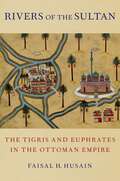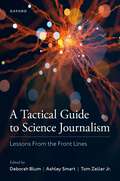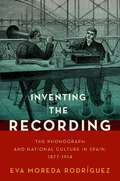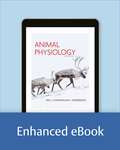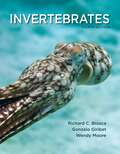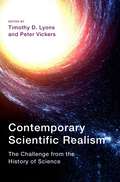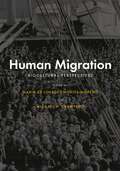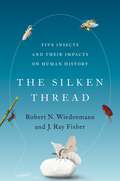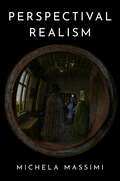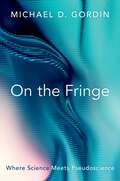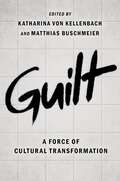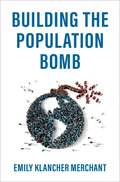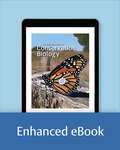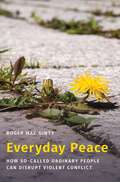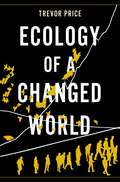- Table View
- List View
Rivers of the Sultan: The Tigris and Euphrates in the Ottoman Empire
by Faisal H. HusainThe Tigris and Euphrates rivers run through the heart of the Middle East and merge in the area of Mesopotamia known as the "cradle of civilization." In their long and volatile political history, the sixteenth century ushered in a rare era of stability and integration. A series of military campaigns between the Mediterranean Sea and the Persian Gulf brought the entirety of their flow under the institutional control of the Ottoman Empire, then at the peak of its power and wealth. Rivers of the Sultan tells the history of the Tigris and Euphrates during the early modern period. Under the leadership of Sultan Süleyman I, the rivers became Ottoman from mountain to ocean, managed by a political elite that pledged allegiance to a single household, professed a common religion, spoke a lingua franca, and received orders from a central administration based in Istanbul. Faisal Husain details how Ottoman unification institutionalized cooperation among the rivers' dominant users and improved the exploitation of their waters for navigation and food production. Istanbul harnessed the energy and resources of the rivers for its security and economic needs through a complex network of forts, canals, bridges, and shipyards. Above all, the imperial approach to river management rebalanced the natural resource disparity within the Tigris-Euphrates basin. Istanbul regularly organized shipments of grain, metal, and timber from upstream areas of surplus in Anatolia to downstream areas of need in Iraq. Through this policy of natural resource redistribution, the Ottoman Empire strengthened its presence in the eastern borderland region with the Safavid Empire and fended off challenges to its authority. Placing these world historic bodies of water at its center, Rivers of the Sultan reveals intimate bonds between state and society, metropole and periphery, and nature and culture in the early modern world.
Rivers of the Sultan: The Tigris and Euphrates in the Ottoman Empire
by Faisal H. HusainThe Tigris and Euphrates rivers run through the heart of the Middle East and merge in the area of Mesopotamia known as the "cradle of civilization." In their long and volatile political history, the sixteenth century ushered in a rare era of stability and integration. A series of military campaigns between the Mediterranean Sea and the Persian Gulf brought the entirety of their flow under the institutional control of the Ottoman Empire, then at the peak of its power and wealth. Rivers of the Sultan tells the history of the Tigris and Euphrates during the early modern period. Under the leadership of Sultan Süleyman I, the rivers became Ottoman from mountain to ocean, managed by a political elite that pledged allegiance to a single household, professed a common religion, spoke a lingua franca, and received orders from a central administration based in Istanbul. Faisal Husain details how Ottoman unification institutionalized cooperation among the rivers' dominant users and improved the exploitation of their waters for navigation and food production. Istanbul harnessed the energy and resources of the rivers for its security and economic needs through a complex network of forts, canals, bridges, and shipyards. Above all, the imperial approach to river management rebalanced the natural resource disparity within the Tigris-Euphrates basin. Istanbul regularly organized shipments of grain, metal, and timber from upstream areas of surplus in Anatolia to downstream areas of need in Iraq. Through this policy of natural resource redistribution, the Ottoman Empire strengthened its presence in the eastern borderland region with the Safavid Empire and fended off challenges to its authority. Placing these world historic bodies of water at its center, Rivers of the Sultan reveals intimate bonds between state and society, metropole and periphery, and nature and culture in the early modern world.
A Tactical Guide to Science Journalism: Lessons From the Front Lines
A Tactical Guide to Science Journalism brings together award-winning journalists from around the world to share fascinating tales of science and how it works and to provide guidance into reporting specialties like infectious disease, climate change, astronomy, public health, physics, and statistics. From practical advice on finding sources and distilling complex research subjects for a general audience, to tips on how to cover science in authoritarian regimes, the book serves as an essential survey of the best in science reporting today--and a testament to the importance of independent journalistic inquiry in understanding research and building trust with audiences. Drawing insights from writers based at publications including The New York Times, the BBC, The Washington Post, Science, The New Yorker, National Geographic and more, this guide is designed to help journalists everywhere improve their craft and serve as a valuable resource for those seeking to understand the profession at its best.
A Tactical Guide to Science Journalism: Lessons From the Front Lines
by Ashley Smart And Tom Zeller Deborah Blum Jr.A Tactical Guide to Science Journalism brings together award-winning journalists from around the world to share fascinating tales of science and how it works and to provide guidance into reporting specialties like infectious disease, climate change, astronomy, public health, physics, and statistics. From practical advice on finding sources and distilling complex research subjects for a general audience, to tips on how to cover science in authoritarian regimes, the book serves as an essential survey of the best in science reporting today--and a testament to the importance of independent journalistic inquiry in understanding research and building trust with audiences. Drawing insights from writers based at publications including The New York Times, the BBC, The Washington Post, Science, The New Yorker, National Geographic and more, this guide is designed to help journalists everywhere improve their craft and serve as a valuable resource for those seeking to understand the profession at its best.
Inventing the Recording: The Phonograph and National Culture in Spain, 1877-1914 (Currents in Latin American and Iberian Music)
by Eva Moreda RodríguezInventing the Recording focuses on the decades in which recorded sound went from a technological possibility to a commercial and cultural artefact. Through the analysis of a specific and unique national context, author Eva Moreda Rodríguez tells the stories of institutions and individuals in Spain and discusses the development of discourses and ideas in close connection with national concerns and debates, all while paying close attention to original recordings from this era. The book starts with the arrival in Spain of notices about Edison's invention of the phonograph in 1877, followed by the first demonstrations of the invention (1878-1882) by scientists and showmen. These demonstrations greatly stimulated the imagination of scientists, journalists and playwrights, who spent the rest of the 1880s speculating about the phonograph and its potential to revolutionize society once it was properly developed and marketed. The book then moves on to analyse the 'traveling phonographs' and salones fonográficos of the 1890s and early 1900s, with phonographs being paraded around Spain and exhibited in group listening sessions in theatres, private homes and social spaces pertaining to different social classes. Finally, the book covers the development of an indigenous recording industry dominated by the so-called gabinetes fonográficos, small businesses that sold imported phonographs, produced their own recordings, and shaped early discourses about commercial phonography and the record as a commodity between 1896 and 1905.
Inventing the Recording: The Phonograph and National Culture in Spain, 1877-1914 (Currents in Latin American and Iberian Music)
by Eva Moreda RodríguezInventing the Recording focuses on the decades in which recorded sound went from a technological possibility to a commercial and cultural artefact. Through the analysis of a specific and unique national context, author Eva Moreda Rodríguez tells the stories of institutions and individuals in Spain and discusses the development of discourses and ideas in close connection with national concerns and debates, all while paying close attention to original recordings from this era. The book starts with the arrival in Spain of notices about Edison's invention of the phonograph in 1877, followed by the first demonstrations of the invention (1878-1882) by scientists and showmen. These demonstrations greatly stimulated the imagination of scientists, journalists and playwrights, who spent the rest of the 1880s speculating about the phonograph and its potential to revolutionize society once it was properly developed and marketed. The book then moves on to analyse the 'traveling phonographs' and salones fonográficos of the 1890s and early 1900s, with phonographs being paraded around Spain and exhibited in group listening sessions in theatres, private homes and social spaces pertaining to different social classes. Finally, the book covers the development of an indigenous recording industry dominated by the so-called gabinetes fonográficos, small businesses that sold imported phonographs, produced their own recordings, and shaped early discourses about commercial phonography and the record as a commodity between 1896 and 1905.
Animal Physiology
by Richard HillComprehensive, contemporary, and engaging, Animal Physiology provides evolutionary and ecological context to help students make connections across all levels of physiological scale. One of the major challenges instructors and students face in Animal Physiology is making connections across levels of biological scale. Animal Physiology addresses this challenge by providing ecological and evolutionary context to the study of physiology at all levels of organization: genome, molecular biology, biochemistry, cells, tissues, organs, and organ systems. Hill's inclusion of ecology and evolution helps readers gain a holistic perspective on animal function and sets Animal Physiology apart from texts that focus more narrowly on physiology. Hill's Animal Physiology is trusted by instructors and students because of its authoritative, current, engaging, and lavishly illustrated presentation.
Invertebrates
by Richard C. Brusca Gonzalo Giribet Wendy MooreInvertebrates is a complete, trusted, and engaging textbook whose comprehensive coverage makes it an invaluable resource for both undergraduate and graduate courses and professional researchers. The 3rd edition has been widely praised for its detailed classifications, high-quality illustrations, and coverage of contemporary debates in the field. The 4th edition will continue to feature recent scholarship and current perspectives, while streamlining the text to improve accessibility for intro-level students. Gonzalo Giribet joins as coauthor, contributing his phylogenomic expertise as an Evolutionary Biologist and Phylogeneticist, and Director of Harvard's Museum of Comparative Zoology.
Contemporary Scientific Realism: The Challenge from the History of Science
by Timothy D. Lyons, Peter VickersScientific realists claim we can justifiably believe that science is getting at the truth. However, they have faced historical challenges: various episodes across history appear to demonstrate that even strongly supported scientific theories can be overturned and left behind. In response, realists have developed new positions and arguments. As a result of specific challenges from the history of science, and realist responses, we find ourselves with an ever-increasing dataset bearing on the (possible) relationship between science and truth. The present volume introduces new historical cases impacting the debate and advances the discussion of cases that have only very recently been introduced. At the same time, shifts in philosophical positions affect the very kind of case study that is relevant. Thus, the historical work must proceed hand in hand with philosophical analysis of the different positions and arguments in play. It is with this in mind that the volume is divided into two sections, entitled "Historical Cases for the Debate" and "Contemporary Scientific Realism." All sides agree that historical cases are informative with regard to how, or whether, science connects with truth. Defying proclamations as early as the 1980s announcing the death knell of the scientific realism debate, here is that rare thing: a philosophical debate making steady and definite progress. Moreover, the progress it is making concerns one of humanity's most profound and important questions: the relationship between science and truth, or, put more boldly, the epistemic relation between humankind and the reality in which we find ourselves.
Human Migration: Biocultural Perspectives
by Maria De Lourdes Muñoz-Moreno and Michael H. CrawfordStudying human migratory patterns can help us make sense of evolution, biology, linguistics, and so much more. Human Migration takes readers through population development and their respective origins to create a comprehensive picture of human migratory patterns. This book explores human migration as a major contributor to globalization that facilitates gene flow and the exchange of cultures and languages. It also traces evolutionary success of a hybrid population, the Black Caribs, after their forced relocation from St. Vincent Island to the Bay Islands and Central America. The volume is split into four sections: Theoretical Overview; Ancient DNA and Migration; Regional Migration; Culture and Migration: and Disease and Migration. This division allows for a seamless transition between a broad range of topics, including molecular genetics, linguistics, cultural anthropology, history, archaeology, demography, and genetic epidemiology. Assembled by volume editors and migration specialists María de Lourdes Muñoz-Moreno and Michael H. Crawford, Human Migration creates an opportunity for researchers, professionals, and students from different fields to review and discuss the most recent trends and challenges surrounding migration, genetics, and anthropology.
The Silken Thread: Five Insects and Their Impacts on Human History
by Robert N. Wiedenmann J. Ray FisherInsects are seldom mentioned in discussions surrounding human history, yet they have dramatically impacted today's societies. This book places them front and center, offering a multidisciplinary view of their significance. Diseases vectored by insects have killed more people than all weapons of war. Fleas are common pests, but some can transmit illnesses such as the bubonic plague. In fact, three pandemics can be traced back to them. Epidemics of typhus have been caused by lice. Conversely, humans have also benefitted from insects for millennia. Silk comes from silkworms and honey comes from bees. Despite the undeniably powerful effects of insects on humans, their stories are typically left out of our history books. In The Silken Thread, entomologists Robert. N. Wiedenmann and J. Ray Fisher link the history of insects to the history of empires, cultural exchanges, and warfare. The book narrows its focus to just five insects: a moth, a flea, a louse, a mosquito, and a bee. The authors explore the impact of these insects throughout time and the common threads connecting them. Using biology to complement history, they showcase these small creatures in a whole new light. On every page, the authors thoughtfully analyze the links between history and entomology. The book begins with silkworms, which have been farmed for centuries. It then moves to fleas and their involvement in the spread of the plague before introducing the role lice played in the Black Death, wars, and immigration. The following section concerns yellow fever mosquitos, emphasizing the effects of yellow fever in the Americas and the connection to sugar and slavery. After discussing the importance of western honey bees, the authors tie these five insects together in an exciting closing chapter.
The Silken Thread: Five Insects and Their Impacts on Human History
by Robert N. Wiedenmann J. Ray FisherInsects are seldom mentioned in discussions surrounding human history, yet they have dramatically impacted today's societies. This book places them front and center, offering a multidisciplinary view of their significance. Diseases vectored by insects have killed more people than all weapons of war. Fleas are common pests, but some can transmit illnesses such as the bubonic plague. In fact, three pandemics can be traced back to them. Epidemics of typhus have been caused by lice. Conversely, humans have also benefitted from insects for millennia. Silk comes from silkworms and honey comes from bees. Despite the undeniably powerful effects of insects on humans, their stories are typically left out of our history books. In The Silken Thread, entomologists Robert. N. Wiedenmann and J. Ray Fisher link the history of insects to the history of empires, cultural exchanges, and warfare. The book narrows its focus to just five insects: a moth, a flea, a louse, a mosquito, and a bee. The authors explore the impact of these insects throughout time and the common threads connecting them. Using biology to complement history, they showcase these small creatures in a whole new light. On every page, the authors thoughtfully analyze the links between history and entomology. The book begins with silkworms, which have been farmed for centuries. It then moves to fleas and their involvement in the spread of the plague before introducing the role lice played in the Black Death, wars, and immigration. The following section concerns yellow fever mosquitos, emphasizing the effects of yellow fever in the Americas and the connection to sugar and slavery. After discussing the importance of western honey bees, the authors tie these five insects together in an exciting closing chapter.
Perspectival Realism (Oxford Studies in Philosophy of Science)
by Michela MassimiWhat does it mean to be a realist about science if one takes seriously the view that scientific knowledge is always perspectival, namely historically and culturally situated? In Perspectival Realism, Michela Massimi explores how scientific knowledge grows and evolves thanks to a plurality of epistemic communities occupying a number of scientific perspectives. The result is a philosophical view that goes under the name of "perspectival realism", and it offers a new lens for thinking about scientific knowledge, realism and pluralism in science. Perspectival Realism begins with an exploration of how epistemic communities often resort to several models and a plurality of practices, drawing on examples from nuclear physics, climate science, and developmental psychology. Massimi explains the perspectival nature of scientific representation, the role of scientific models as inferential blueprints, and the variety of scientific realism that naturally accompanies such a view. Perspectival realism is realism about phenomena (rather than about theories or unobservable entities). This novel realist view places epistemic communities and their situated knowledge center stage. The result is a portrait of scientific knowledge as a collaborative inquiry, where the reliability of science is made possible by a plurality of historically and culturally situated scientific perspectives. Along the way, Massimi offers insight into the nature of scientific modelling, scientific knowledge qua modal knowledge, data-to-phenomena inferences, and natural kinds as sortal concepts. Perspectival Realism offers a realist view that takes the multicultural nature of science seriously and couples it with cosmopolitan duties about how one ought to think about scientific knowledge and the distribution of benefits gained from scientific advancements. This is an open access title available under the terms of a CC BY-NC-ND 4.0 International license. It is free to read at Oxford Scholarship Online and offered as a free PDF download from OUP and selected open access locations.
Perspectival Realism (Oxford Studies in Philosophy of Science)
by Michela MassimiWhat does it mean to be a realist about science if one takes seriously the view that scientific knowledge is always perspectival, namely historically and culturally situated? In Perspectival Realism, Michela Massimi explores how scientific knowledge grows and evolves thanks to a plurality of epistemic communities occupying a number of scientific perspectives. The result is a philosophical view that goes under the name of "perspectival realism", and it offers a new lens for thinking about scientific knowledge, realism and pluralism in science. Perspectival Realism begins with an exploration of how epistemic communities often resort to several models and a plurality of practices, drawing on examples from nuclear physics, climate science, and developmental psychology. Massimi explains the perspectival nature of scientific representation, the role of scientific models as inferential blueprints, and the variety of scientific realism that naturally accompanies such a view. Perspectival realism is realism about phenomena (rather than about theories or unobservable entities). This novel realist view places epistemic communities and their situated knowledge center stage. The result is a portrait of scientific knowledge as a collaborative inquiry, where the reliability of science is made possible by a plurality of historically and culturally situated scientific perspectives. Along the way, Massimi offers insight into the nature of scientific modelling, scientific knowledge qua modal knowledge, data-to-phenomena inferences, and natural kinds as sortal concepts. Perspectival Realism offers a realist view that takes the multicultural nature of science seriously and couples it with cosmopolitan duties about how one ought to think about scientific knowledge and the distribution of benefits gained from scientific advancements. This is an open access title available under the terms of a CC BY-NC-ND 4.0 International license. It is free to read at Oxford Scholarship Online and offered as a free PDF download from OUP and selected open access locations.
On the Fringe: Where Science Meets Pseudoscience
by Michael D. GordinEveryone has heard of the term "pseudoscience", typically used to describe something that looks like science, but is somehow false, misleading, or unproven. Many would be able to agree on a list of things that fall under its umbrella-- astrology, phrenology, UFOlogy, creationism, and eugenics might come to mind. But defining what makes these fields "pseudo" is a far more complex issue. It has proved impossible to come up with a simple criterion that enables us to differentiate pseudoscience from genuine science. Given the virulence of contemporary disputes over the denial of climate change and anti-vaccination movements--both of which display allegations of "pseudoscience" on all sides-- there is a clear need to better understand issues of scientific demarcation. On the Fringe explores the philosophical and historical attempts to address this problem of demarcation. This book argues that by understanding doctrines that are often seen as antithetical to science, we can learn a great deal about how science operated in the past and does today. This exploration raises several questions: How does a doctrine become demonized as pseudoscientific? Who has the authority to make these pronouncements? How is the status of science shaped by political or cultural contexts? How does pseudoscience differ from scientific fraud? Michael D. Gordin both answers these questions and guides readers along a bewildering array of marginalized doctrines, looking at parapsychology (ESP), Lysenkoism, scientific racism, and alchemy, among others, to better understand the struggle to define what science is and is not, and how the controversies have shifted over the centuries. On the Fringe provides a historical tour through many of these fringe fields in order to provide tools to think deeply about scientific controversies both in the past and in our present.
On the Fringe: Where Science Meets Pseudoscience
by Michael D. GordinEveryone has heard of the term "pseudoscience", typically used to describe something that looks like science, but is somehow false, misleading, or unproven. Many would be able to agree on a list of things that fall under its umbrella-- astrology, phrenology, UFOlogy, creationism, and eugenics might come to mind. But defining what makes these fields "pseudo" is a far more complex issue. It has proved impossible to come up with a simple criterion that enables us to differentiate pseudoscience from genuine science. Given the virulence of contemporary disputes over the denial of climate change and anti-vaccination movements--both of which display allegations of "pseudoscience" on all sides-- there is a clear need to better understand issues of scientific demarcation. On the Fringe explores the philosophical and historical attempts to address this problem of demarcation. This book argues that by understanding doctrines that are often seen as antithetical to science, we can learn a great deal about how science operated in the past and does today. This exploration raises several questions: How does a doctrine become demonized as pseudoscientific? Who has the authority to make these pronouncements? How is the status of science shaped by political or cultural contexts? How does pseudoscience differ from scientific fraud? Michael D. Gordin both answers these questions and guides readers along a bewildering array of marginalized doctrines, looking at parapsychology (ESP), Lysenkoism, scientific racism, and alchemy, among others, to better understand the struggle to define what science is and is not, and how the controversies have shifted over the centuries. On the Fringe provides a historical tour through many of these fringe fields in order to provide tools to think deeply about scientific controversies both in the past and in our present.
Guilt: A Force of Cultural Transformation
by Katharina Von Kellenbach Matthias BuschmeierAcross the globe guilt has become a contentious issue in discussions over historical accountability and reparation for past injustices. Guilt has become political, and it assumes a highly visible place in the public sphere and academic debate in fields ranging from cultural memory, to transitional justice, post-colonialism, Africana studies, and the study of populist extremism. This volume argues that guilt is a productive force that helps to balance unequal power dynamics between individuals and groups. Moreover, guilt can also be an ambivalent force affecting social cohesion, moral revolutions, political negotiation, artistic creativity, legal innovation, and other forms of transformations. With chapters bridging the social sciences, law, and humanities, chapter authors examine the role and function of guilt in society and present case studies from seven national contexts. The book approaches guilt as a generative and enduring presence in societies and cultures rather than as an oppressive and destructive burden that necessitates quick release and liberation. It also considers guilt as something that legitimates the future infliction of violence. Finally, it examines the conditions under which guilt promotes transformation, repair, and renewal of relationships.
Guilt: A Force of Cultural Transformation
by Katharina Von Kellenbach Matthias BuschmeierAcross the globe guilt has become a contentious issue in discussions over historical accountability and reparation for past injustices. Guilt has become political, and it assumes a highly visible place in the public sphere and academic debate in fields ranging from cultural memory, to transitional justice, post-colonialism, Africana studies, and the study of populist extremism. This volume argues that guilt is a productive force that helps to balance unequal power dynamics between individuals and groups. Moreover, guilt can also be an ambivalent force affecting social cohesion, moral revolutions, political negotiation, artistic creativity, legal innovation, and other forms of transformations. With chapters bridging the social sciences, law, and humanities, chapter authors examine the role and function of guilt in society and present case studies from seven national contexts. The book approaches guilt as a generative and enduring presence in societies and cultures rather than as an oppressive and destructive burden that necessitates quick release and liberation. It also considers guilt as something that legitimates the future infliction of violence. Finally, it examines the conditions under which guilt promotes transformation, repair, and renewal of relationships.
Building the Population Bomb
by Emily Klancher MerchantAcross the twentieth century, Earth's human population increased undeniably quickly, rising from 1.6 billion people in 1900 to 6.1 billion in 2000. As population grew, it also began to take the blame for some of the world's most serious problems, from global poverty to environmental degradation, and became an object of intervention for governments and nongovernmental organizations. But the links between population, poverty, and pollution were neither obvious nor uncontested. Building the Population Bomb tells the story of the twentieth-century population crisis by examining how scientists, philanthropists, and governments across the globe came to define the rise of the world's human numbers as a problem. It narrates the history of demography and population control in the twentieth century, examining alliances and rivalries between natural scientists concerned about the depletion of the world's natural resources, social scientists concerned about a bifurcated global economy, philanthropists aiming to preserve American political and economic hegemony, and heads of state in the Global South seeking rapid economic development. It explains how these groups forged a consensus that promoted fertility limitation at the expense of women, people of color, the world's poor, and the Earth itself. As the world's population continues to grow--with the United Nations projecting 11 billion people by the year 2100--Building the Population Bomb steps back from the conventional population debate to demonstrate that our anxieties about future population growth are not obvious but learned. Ultimately, this critical volume shows how population growth itself is not a barrier to economic, environmental, or reproductive justice; rather, it is our anxiety over population growth that distracts us from the pursuit of these urgent goals.
Building the Population Bomb
by Emily Klancher MerchantAcross the twentieth century, Earth's human population increased undeniably quickly, rising from 1.6 billion people in 1900 to 6.1 billion in 2000. As population grew, it also began to take the blame for some of the world's most serious problems, from global poverty to environmental degradation, and became an object of intervention for governments and nongovernmental organizations. But the links between population, poverty, and pollution were neither obvious nor uncontested. Building the Population Bomb tells the story of the twentieth-century population crisis by examining how scientists, philanthropists, and governments across the globe came to define the rise of the world's human numbers as a problem. It narrates the history of demography and population control in the twentieth century, examining alliances and rivalries between natural scientists concerned about the depletion of the world's natural resources, social scientists concerned about a bifurcated global economy, philanthropists aiming to preserve American political and economic hegemony, and heads of state in the Global South seeking rapid economic development. It explains how these groups forged a consensus that promoted fertility limitation at the expense of women, people of color, the world's poor, and the Earth itself. As the world's population continues to grow--with the United Nations projecting 11 billion people by the year 2100--Building the Population Bomb steps back from the conventional population debate to demonstrate that our anxieties about future population growth are not obvious but learned. Ultimately, this critical volume shows how population growth itself is not a barrier to economic, environmental, or reproductive justice; rather, it is our anxiety over population growth that distracts us from the pursuit of these urgent goals.
An Introduction to Conservation Biology
by Anna SherAn Introduction to Conservation Biology is the only text designed for both aspiring conservation biologists and non-majors who are interested in this topical field, providing up-to-date perspectives on high-profile issues such as sustainable development, global warming, and strategies to save species on the verge of extinction. The book focuses successively on biological diversity and its value; threats to biological diversity; conservation at the population and species levels; protecting, managing and restoring ecosystems; and sustainable development. Each chapter is beautifully illustrated in full color with diverse examples from the current literature. Chapters begin with guiding conservation biology principles and end with study aids such as summaries, an annotated list of suggested readings, and discussion questions. Throughout, the authors maintain a focus on the active role that scientists, local people, conservation organizations, government, and the general public play in protecting biodiversity, even while providing for human needs.
Everyday Peace: How So-called Ordinary People Can Disrupt Violent Conflict (Studies in Strategic Peacebuilding)
by Roger Mac GintyAn exploration of how so-called ordinary people can disrupt violent conflict and forge peace. In this pathbreaking book, Roger Mac Ginty explores everyday peace-or how individuals and small groups can eke out spaces of tolerance and conciliation in conflict-ridden societies. Drawing on original material from the Everyday Peace Indicators project, he blends theory and concept-building together with contemporary and comparative examples. Unusual for the disciplines of peace and conflict studies as well as international relations, Everyday Peace also utilizes personal diaries and memoirs from World Wars One and Two. The book unpacks the core components of everyday peace and argues that it is constructed from a mix of sociality, reciprocity, and solidarity. This exploration of bottom-up and community-level approaches to peace challenges the usual concentration on top-down approaches to peace advanced by governments and international organizations. Indeed, the book goes to the lowest level of social organization - individuals, families and small groups of friends and colleagues - and looks at everyday interaction in workplaces, the stairwells of apartment buildings, and the queue for public transport. Mac Ginty sees peace and conflict as being embodied, lived, and experienced - and constructs a multi-layered definition of peace. Importantly, he applies his evidentiary base of micro-acts that constitute everyday peace to societies that have emerged out of conflict and have not experienced recidivism on a large scale. Unlike most who focus on top-down processes, he demonstrates that what matters is the interaction between top-down and bottom-up peace and how, in an ideal scenario, they can have a symbiotic relationship. By focusing on how the small-scale can have big and lasting effects, Everyday Peace will reshape our understanding of how peace comes about.
Everyday Peace: How So-called Ordinary People Can Disrupt Violent Conflict (Studies in Strategic Peacebuilding)
by Roger Mac GintyAn exploration of how so-called ordinary people can disrupt violent conflict and forge peace. In this pathbreaking book, Roger Mac Ginty explores everyday peace-or how individuals and small groups can eke out spaces of tolerance and conciliation in conflict-ridden societies. Drawing on original material from the Everyday Peace Indicators project, he blends theory and concept-building together with contemporary and comparative examples. Unusual for the disciplines of peace and conflict studies as well as international relations, Everyday Peace also utilizes personal diaries and memoirs from World Wars One and Two. The book unpacks the core components of everyday peace and argues that it is constructed from a mix of sociality, reciprocity, and solidarity. This exploration of bottom-up and community-level approaches to peace challenges the usual concentration on top-down approaches to peace advanced by governments and international organizations. Indeed, the book goes to the lowest level of social organization - individuals, families and small groups of friends and colleagues - and looks at everyday interaction in workplaces, the stairwells of apartment buildings, and the queue for public transport. Mac Ginty sees peace and conflict as being embodied, lived, and experienced - and constructs a multi-layered definition of peace. Importantly, he applies his evidentiary base of micro-acts that constitute everyday peace to societies that have emerged out of conflict and have not experienced recidivism on a large scale. Unlike most who focus on top-down processes, he demonstrates that what matters is the interaction between top-down and bottom-up peace and how, in an ideal scenario, they can have a symbiotic relationship. By focusing on how the small-scale can have big and lasting effects, Everyday Peace will reshape our understanding of how peace comes about.
Ecology of a Changed World
by Trevor PriceAn increasing amount of usable space on our planet is crowded by humans. Whether we are using the space for permanent homes, vacation homes, travel accommodations, farming, public recreation, transportation, or office buildings, our chronic overuse of Earth's resources is pushing our ecosystem into uncharted territories. This has spurred many species extinctions, and we can expect the losses to continue to grow. Ecology of a Changed World outlines the importance of species conservation relative to human existence. The book breaks down ecological principles and explains six threats to biodiversity in terms anyone studying ecology, evolutionary biology, environmental science, or environmental justice will understand. Ecologist Trevor Price begins the book by breaking down population growth, food webs, species interaction, and other ecological principles. He draws on examples from agriculture, disease, fisheries, and societal growth throughout each chapter, offering insight into the relationships between demographic transitions, monetary exchanges, and ecosystems. Price focuses on six threats to biodiversity--climate change, overharvesting, pollution, habitat loss, invasive species, and disease--and offers the history, current status, and economic as well as environmental impacts of each of these. He ends the book with a rigorous review of the importance of species diversity, outlining the ways losses to our ecosystem will be a detriment to public health and global wealth. Taking readers through competition, predation, and parasitism, Ecology of a Changed World helpfully traces what has occurred on our planet throughout history, why these things happened, and how we can use this information to determine and shape our future.
Ecology of a Changed World
by Trevor PriceAn increasing amount of usable space on our planet is crowded by humans. Whether we are using the space for permanent homes, vacation homes, travel accommodations, farming, public recreation, transportation, or office buildings, our chronic overuse of Earth's resources is pushing our ecosystem into uncharted territories. This has spurred many species extinctions, and we can expect the losses to continue to grow. Ecology of a Changed World outlines the importance of species conservation relative to human existence. The book breaks down ecological principles and explains six threats to biodiversity in terms anyone studying ecology, evolutionary biology, environmental science, or environmental justice will understand. Ecologist Trevor Price begins the book by breaking down population growth, food webs, species interaction, and other ecological principles. He draws on examples from agriculture, disease, fisheries, and societal growth throughout each chapter, offering insight into the relationships between demographic transitions, monetary exchanges, and ecosystems. Price focuses on six threats to biodiversity--climate change, overharvesting, pollution, habitat loss, invasive species, and disease--and offers the history, current status, and economic as well as environmental impacts of each of these. He ends the book with a rigorous review of the importance of species diversity, outlining the ways losses to our ecosystem will be a detriment to public health and global wealth. Taking readers through competition, predation, and parasitism, Ecology of a Changed World helpfully traces what has occurred on our planet throughout history, why these things happened, and how we can use this information to determine and shape our future.
